If you’ve ever felt that “less is more” just isn’t your vibe, you’re not alone. A maximalist living room celebrates abundance, personality, and the beautiful chaos of surrounding yourself with things you genuinely love. It’s about layering colors, mixing patterns, and displaying collections without apology.
This approach to design feels refreshingly honest. Instead of hiding your passions behind closed doors, maximalism invites you to showcase them proudly. Whether it’s vintage finds from flea markets, bold artwork, or that quirky lamp you couldn’t resist, everything has a place in this expressive living room design.
The beauty of maximalism lies in its flexibility. There are no strict rules about what matches or how many patterns are too many. It’s deeply personal, which means your space will never look like a generic showroom. Ready to embrace the bold? These ideas will help you create a living room that’s unapologetically you.
1. Layer Rugs for Visual Depth and Comfort
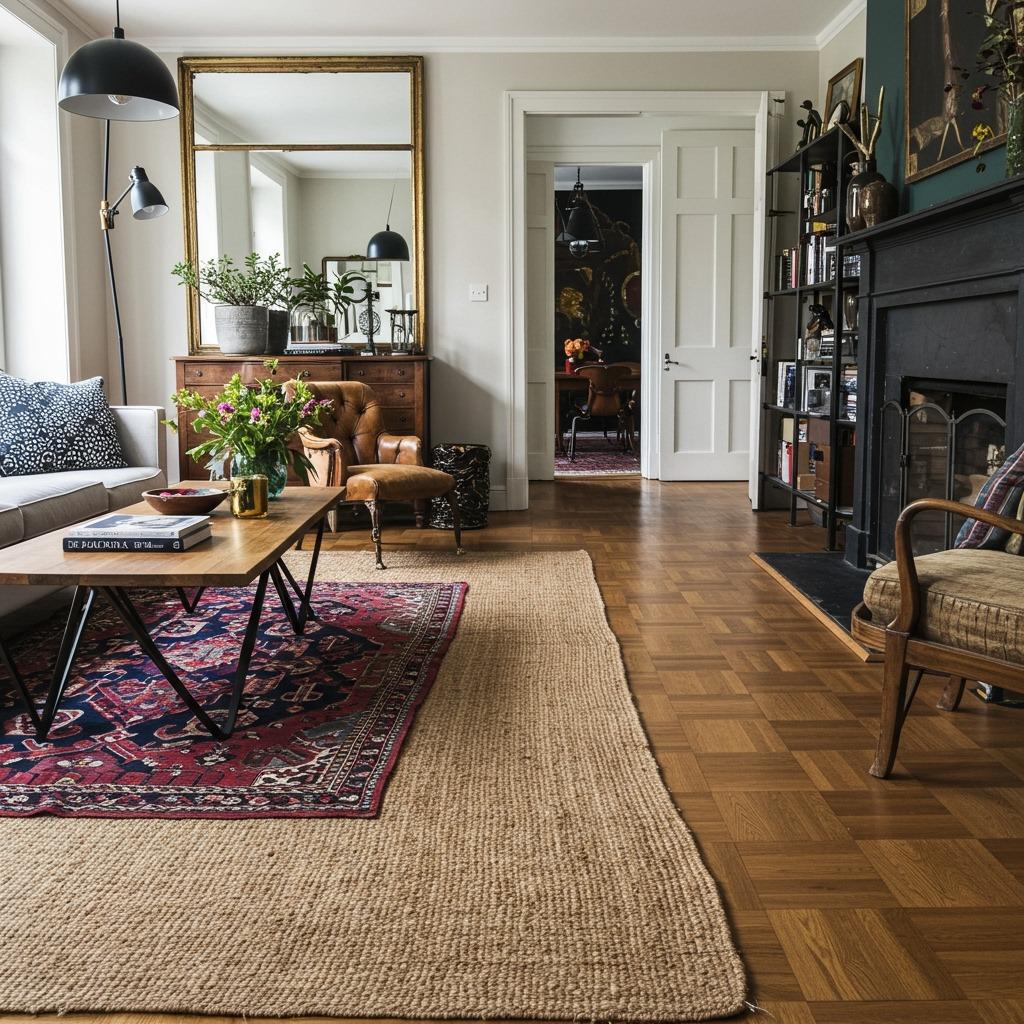
Rug layering instantly adds dimension to any space. Start with a large neutral base rug, then add a smaller patterned one on top. This technique creates visual interest while defining different zones within your room.
The contrast between textures matters just as much as patterns. Try pairing a flat-weave jute rug with a plush Persian or Moroccan rug. The textural difference adds another layer of richness that maximalism thrives on.
Don’t worry about the rugs being from different eras or styles. A vintage Turkish kilim over a modern sisal rug? That unexpected combination is exactly what makes maximalist spaces so captivating. The key is ensuring at least one color connects the two pieces.
2. Create a Gallery Wall That Tells Your Story

Gallery walls are maximalism’s best friend. Instead of perfectly aligned frames, embrace the salon-style approach where art of different sizes and styles covers the wall from floor to ceiling. This creates an immersive visual experience that draws people in.
Mix mediums freely. Combine oil paintings with photography, prints with textiles, mirrors with sculptural pieces. The variety keeps eyes moving around the wall, discovering new details with each glance. Personal mementos and family photos alongside art make the display even more meaningful.
Color coordination can help unify diverse pieces. Even if the artwork styles vary wildly, pulling similar color tones throughout creates unexpected harmony. Or go the opposite route and embrace total chromatic chaos if that feels more authentic to you.
3. Mix Patterns Without Fear
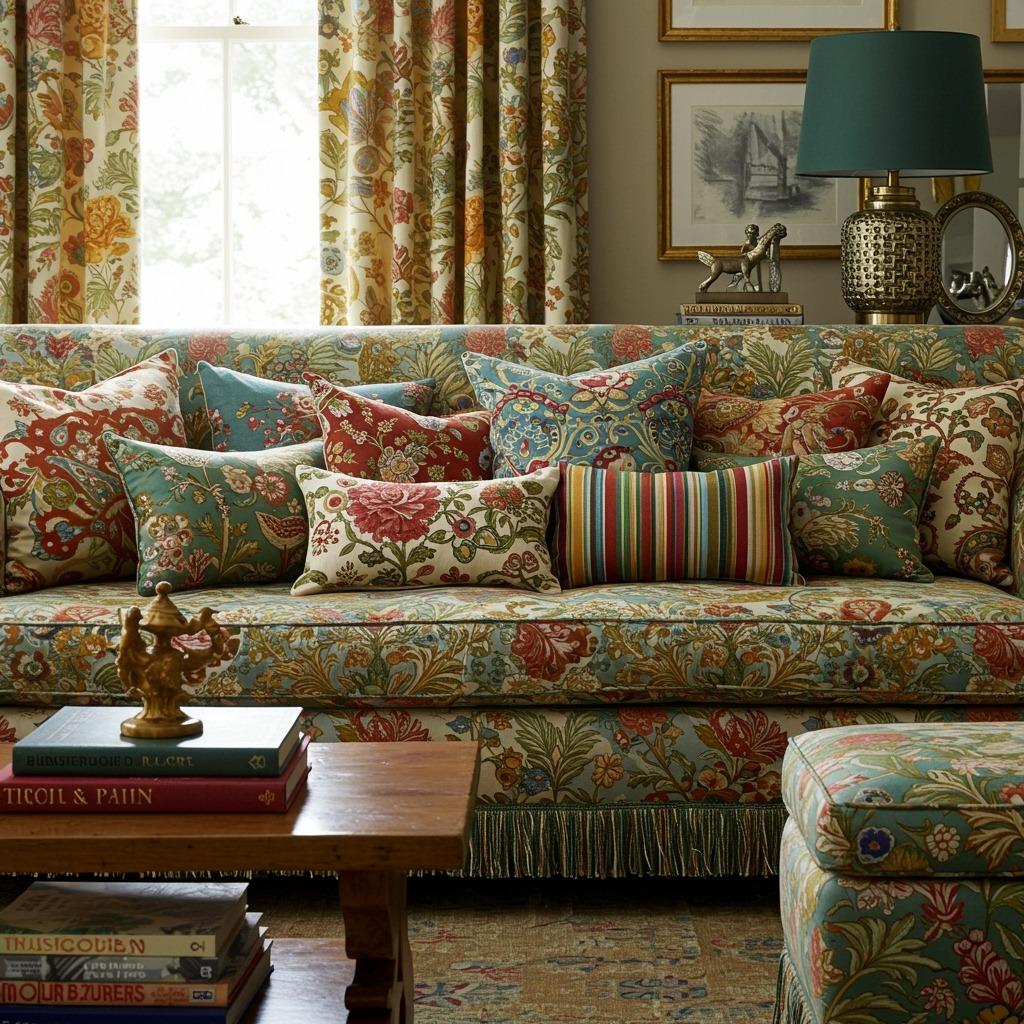
Pattern mixing intimidates many people, but maximalism says bring it on. The trick is varying the scale of your patterns. Pair large-scale florals with small geometric prints, or bold stripes with delicate paisley. Different sizes prevent patterns from competing visually.
Repetition of at least one color across different patterns creates cohesion. If your floral curtains have touches of emerald green, echo that in a geometric pillow or striped throw. These color connections act as threads tying the room together.
Texture adds another dimension to pattern play. A velvet damask pillow reads differently than the same pattern in linen. Mixing materials alongside patterns creates even more depth, which is exactly what a vibrant interior needs to feel complete.
4. Embrace Jewel Tones for Richness
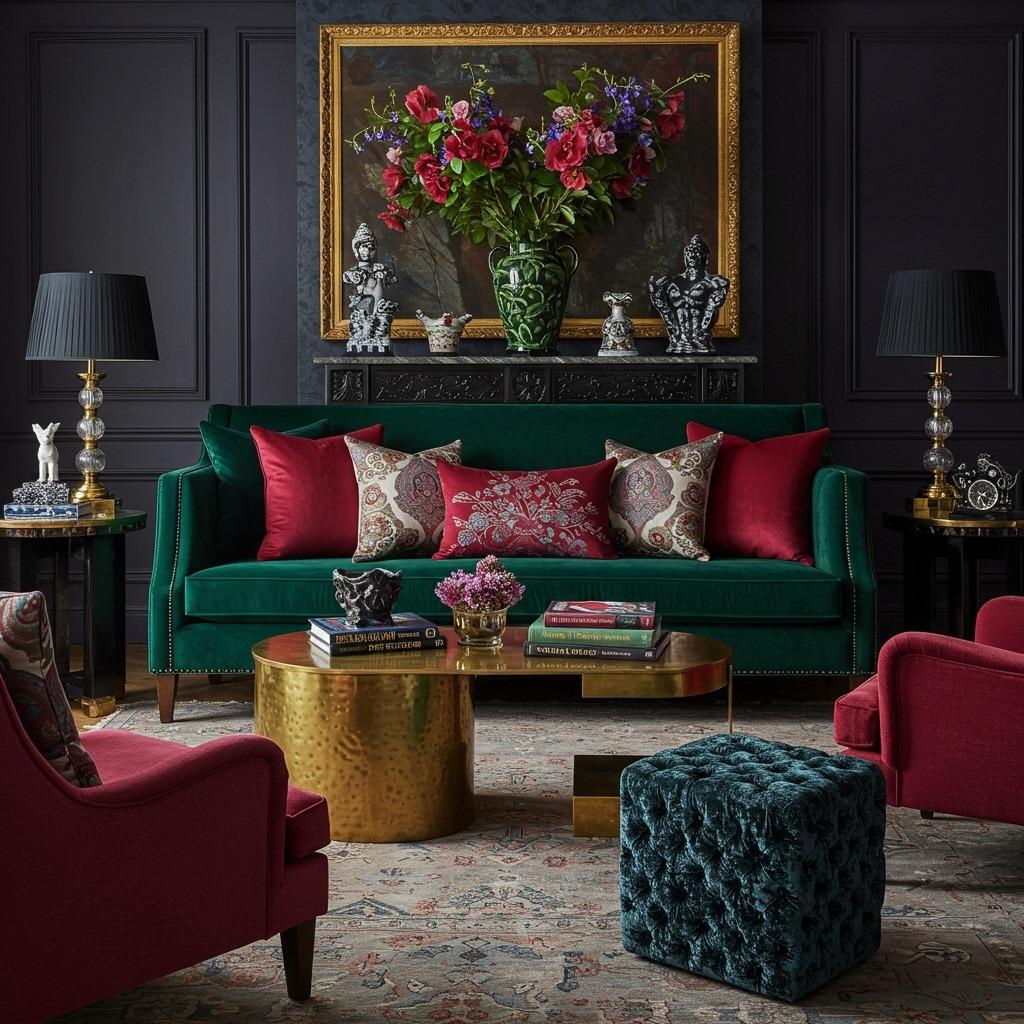
Jewel tones bring instant drama and sophistication. Deep emerald greens, sapphire blues, ruby reds, and amethyst purples create a luxurious atmosphere that feels both cozy and opulent. These saturated colors work beautifully in maximalist spaces because they hold their own among busy surroundings.
Don’t limit yourself to one jewel tone. Maximalism encourages you to use several together, creating a gem-box effect. A sapphire velvet sofa against emerald walls with ruby accent pillows? That’s the kind of bold combination that makes maximalist hearts sing.
Metallics enhance jewel tones beautifully. Gold, brass, and copper fixtures catch light and add warmth to cooler jewel tones. The reflective quality of metals also helps bounce light around the room, preventing darker colors from feeling heavy. This approach to home improvement can completely transform how a space feels.
5. Display Collections as Decorative Features
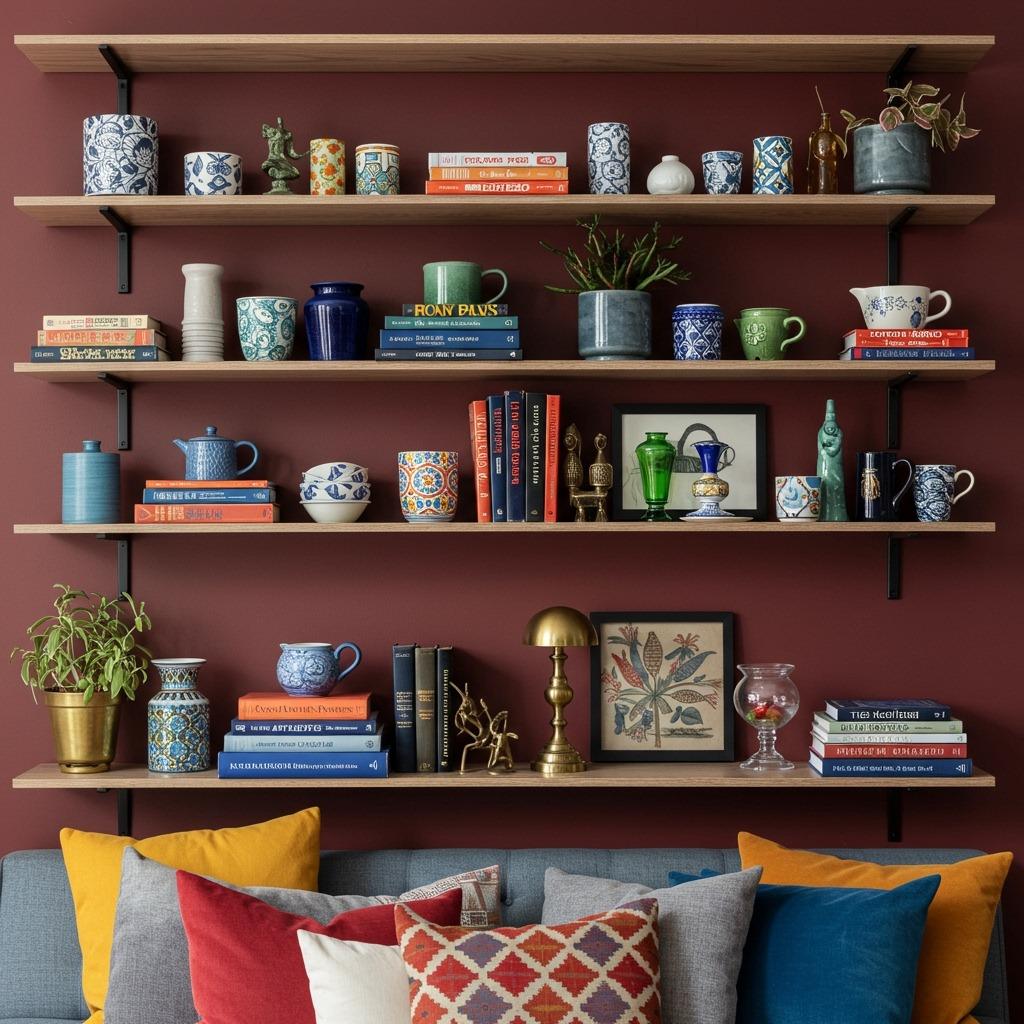
Your collections deserve to be seen, not stored away. Whether you collect vintage cameras, ceramic vases, or antique books, displaying them en masse creates striking visual impact. Grouped collections become art installations in their own right.
Repetition of similar objects creates rhythm even within maximalism’s chaos. A shelf lined with blue and white porcelain, a wall of vintage plates, or a console table crowded with brass candlesticks all demonstrate intentional collecting rather than random clutter.
Vary heights and use risers to create dimension in your displays. Books stacked horizontally can lift smaller objects, while wall-mounted shelves at different levels add vertical interest. The goal is making every collection visible and accessible while maintaining visual intrigue.
6. Layer Lighting for Ambiance and Drama
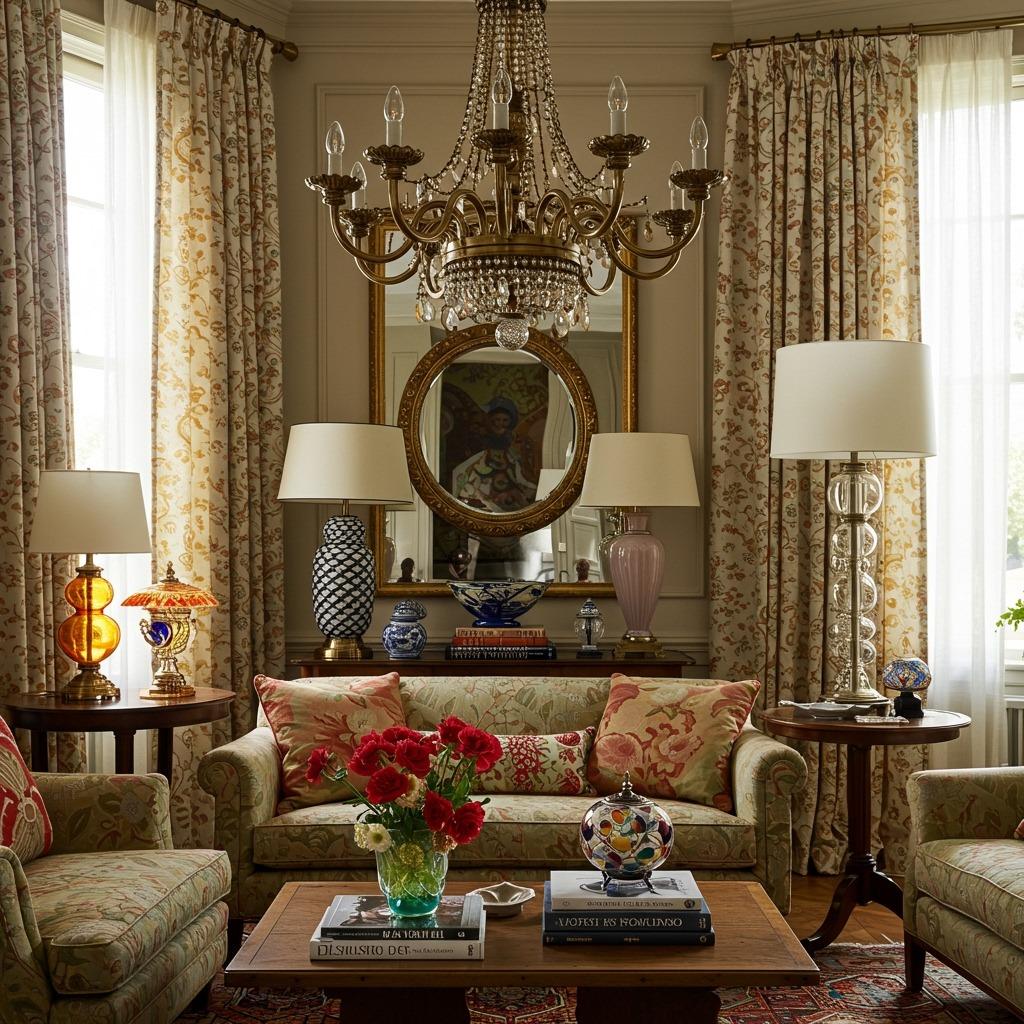
Multiple light sources at different heights create the perfect maximalist glow. Combine a statement chandelier with table lamps, floor lamps, and wall sconces. Each fixture can be bold and decorative, adding to your room’s overall visual feast.
Sculptural lighting doubles as art. An ornate chandelier, a quirky vintage floor lamp, or colorful glass table lamps contribute personality beyond their functional purpose. In maximalism, light fixtures should never fade into the background.
Dimmer switches give you control over ambiance. Bright light showcases all your collected treasures during the day, while softer evening light creates a more intimate, cozy atmosphere. This flexibility matters in a space with so much visual stimulation.
7. Use Wallpaper as Art
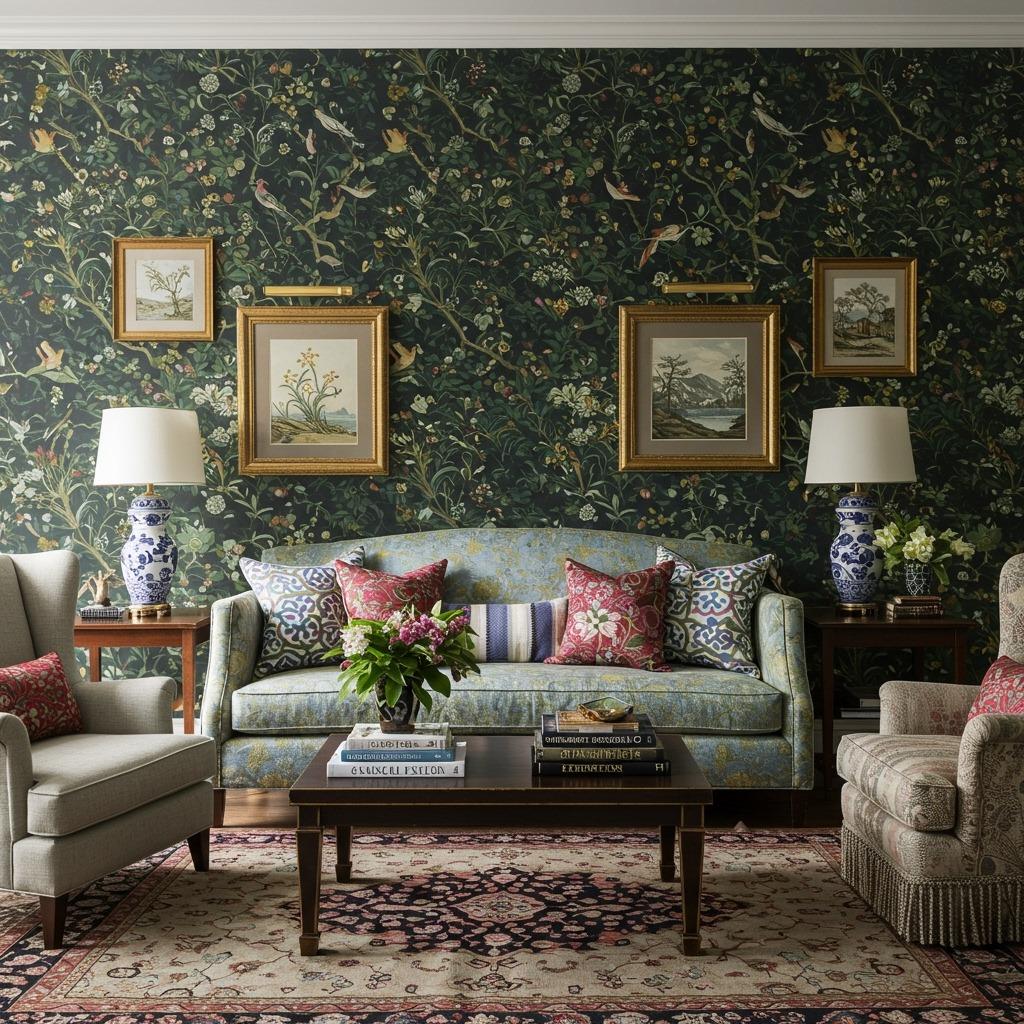
Bold wallpaper makes an immediate statement in maximalist spaces. Florals, damasks, chinoiserie, or geometric patterns set the tone for the entire room. Unlike minimalist spaces where wallpaper might overwhelm, here it’s just the beginning of your layered design.
Don’t stop at one accent wall. Maximalism gives you permission to wallpaper the entire room, or even mix patterns on different walls. This might sound chaotic, but when done with intention, it creates an immersive, boutique hotel vibe that’s thoroughly sophisticated.
Wallpaper also hides imperfect walls beautifully. Busy patterns camouflage minor flaws that would show on plain painted surfaces. This practical benefit makes wallpaper even more appealing for older homes.
8. Pile On the Throw Pillows
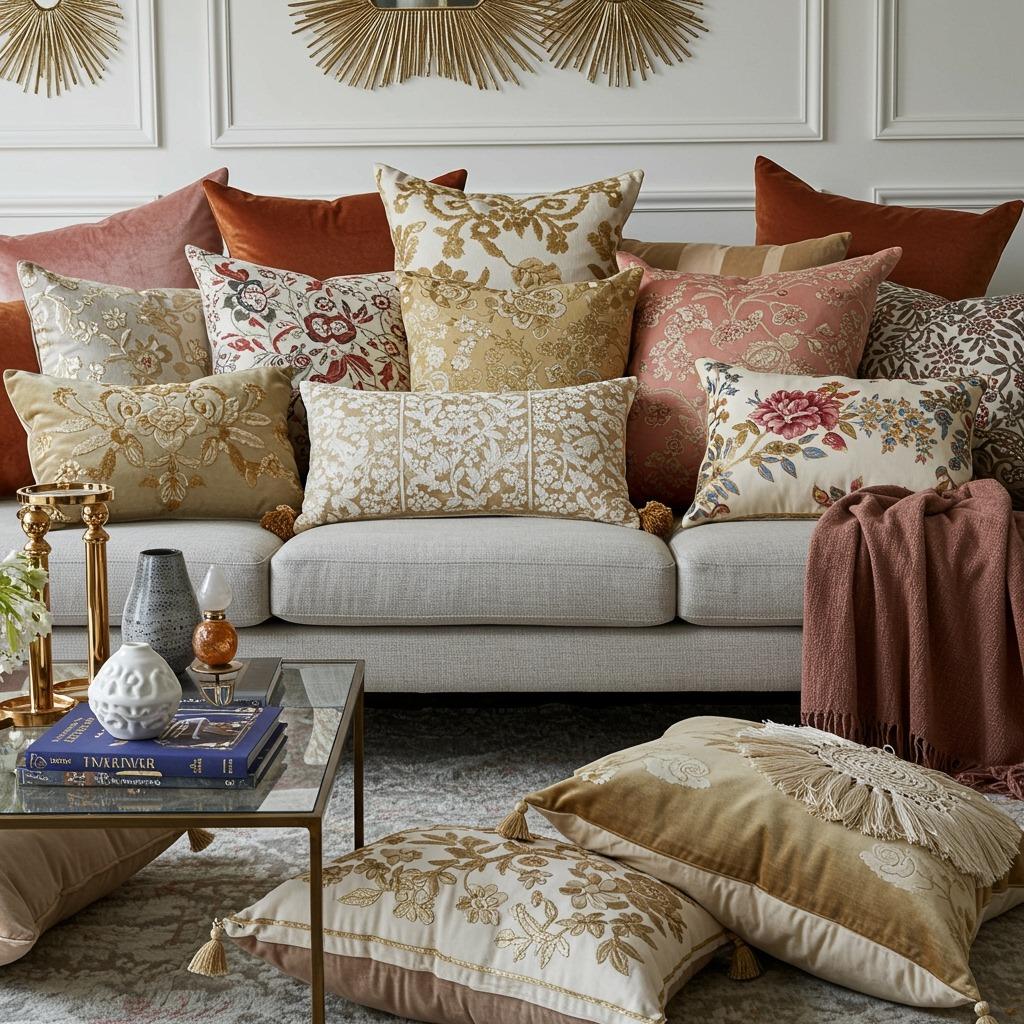
If you’ve ever wondered how many throw pillows are too many, maximalism answers: there’s no such thing. Layer pillows in different sizes, patterns, and textures across your sofa and chairs. Start with larger pillows in back and work toward smaller ones in front.
Mix pillow shapes for added interest. Combine standard squares with lumbar pillows, bolsters, and even round options. The varied silhouettes create a more dynamic, collected-over-time look rather than a matchy-matchy set.
Texture matters as much as pattern. Velvet, linen, silk, embroidered, tasseled, and fringed pillows all bring something different to your seating. The tactile variety invites people to sink in and get comfortable among the abundance.
9. Incorporate Vintage and Antique Furniture
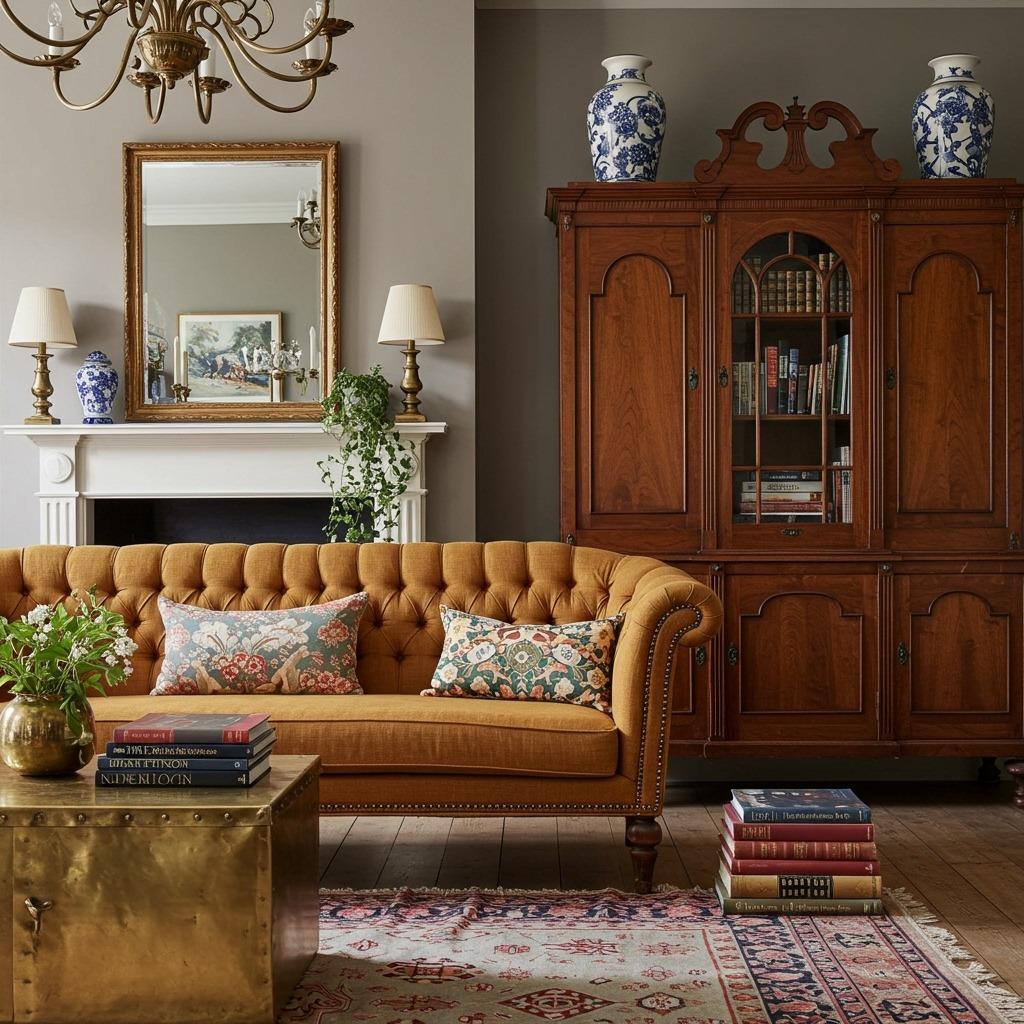
Mixing furniture from different eras prevents your maximalist living room from looking like it came from a single store. A Victorian settee next to a mid-century modern coffee table creates the kind of eclectic tension that makes spaces memorable.
Vintage pieces often have superior craftsmanship and unique details you won’t find in contemporary furniture. Carved wood, original hardware, and patina add character that new pieces simply can’t replicate. These details contribute to the layered richness maximalism requires.
Don’t worry about matching wood tones. Different finishes add to the collected aesthetic. A dark mahogany cabinet, honey oak side table, and painted vintage dresser can coexist beautifully when united by your overall color scheme and styling.
10. Bring in Plants and Natural Elements
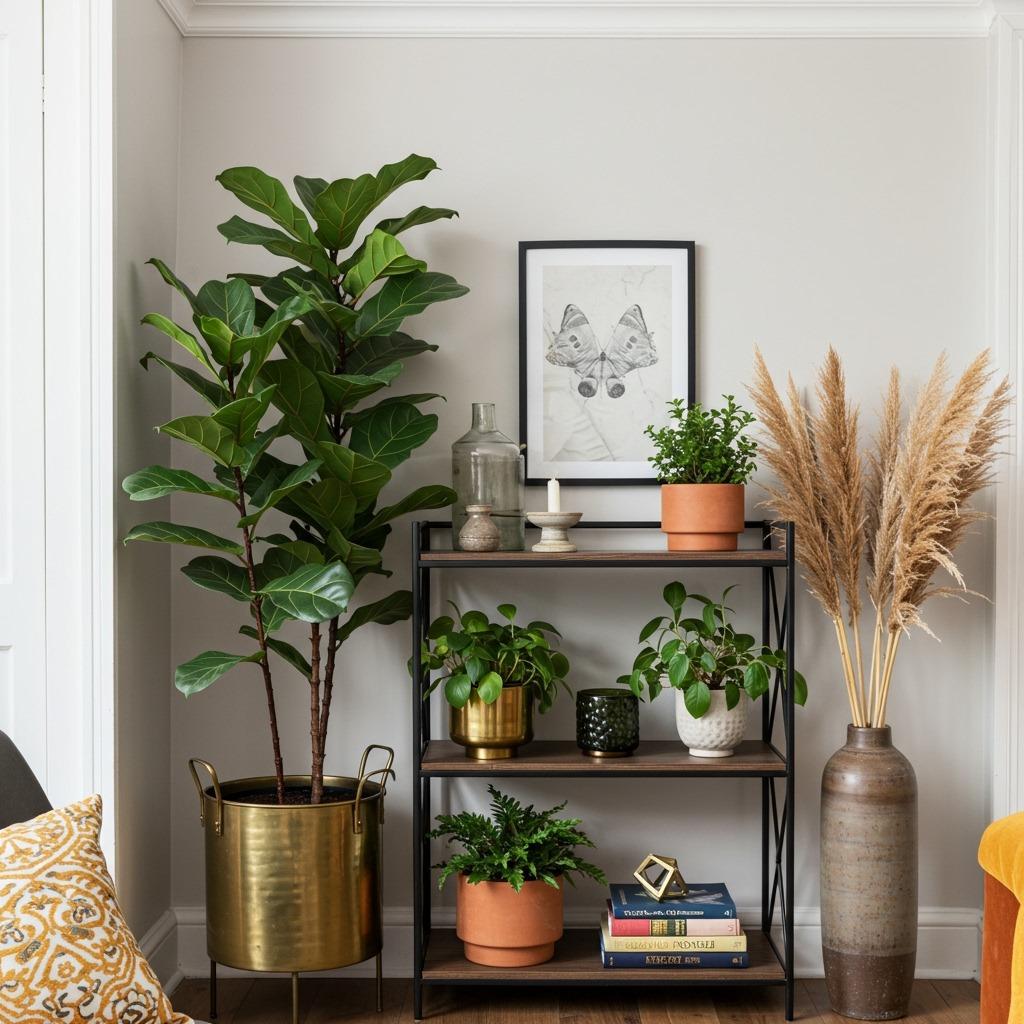
Plants add life and freshness to pattern-heavy spaces. Large statement plants like fiddle leaf figs or monstera balance all the decorative elements, while smaller plants on shelves and tables fill gaps with organic shapes.
Varied planters contribute to your maximalist aesthetic. Mix ceramic, brass, woven baskets, and colorful pots. Vintage planters from thrift stores often have unique glazes and shapes that add to your room’s eclectic personality.
Dried flowers and branches offer similar benefits without the maintenance. Pampas grass, eucalyptus, or dramatic dried palm fronds in oversized vases create sculptural moments. These natural elements soften hard edges and provide textural contrast to fabrics and patterns. Similar to indoor garden living room concepts, plants bridge the gap between maximalist interiors and nature.
11. Add Ornate Mirrors for Reflection and Light
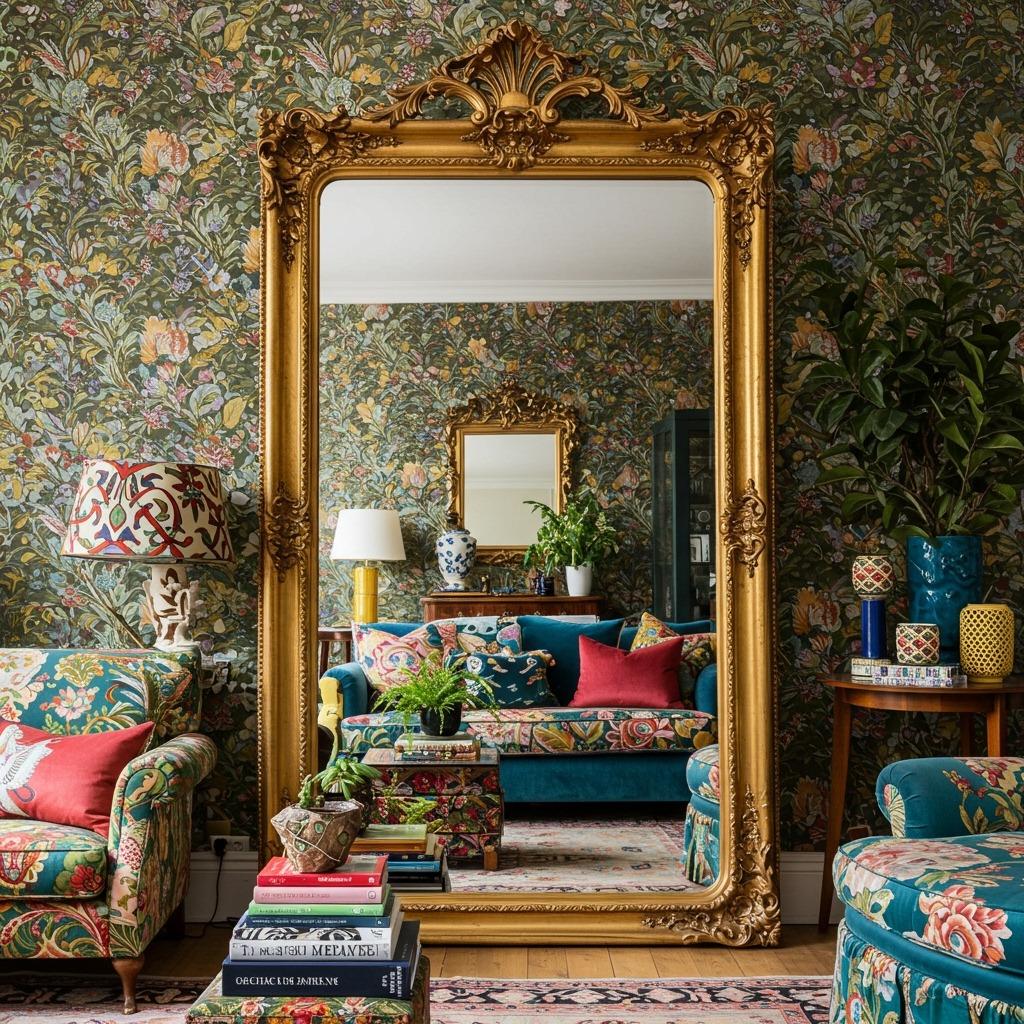
Mirrors multiply everything in a maximalist space, which is exactly what you want. An ornate gilded mirror or collection of vintage mirrors reflects your carefully curated treasures while bouncing light around the room. The reflective quality prevents rich colors and patterns from feeling too heavy.
Oversized mirrors make bold statements. A floor-to-ceiling mirror with an elaborate frame becomes a focal point that also makes your space feel larger. This works particularly well in small space renovation projects where you want maximalist style without sacrificing the sense of openness.
Group smaller mirrors like artwork. A collection of vintage hand mirrors or decorative wall mirrors arranged together creates the same gallery wall effect as artwork, but with the added benefit of reflection and dimension.
12. Layer Window Treatments for Luxury
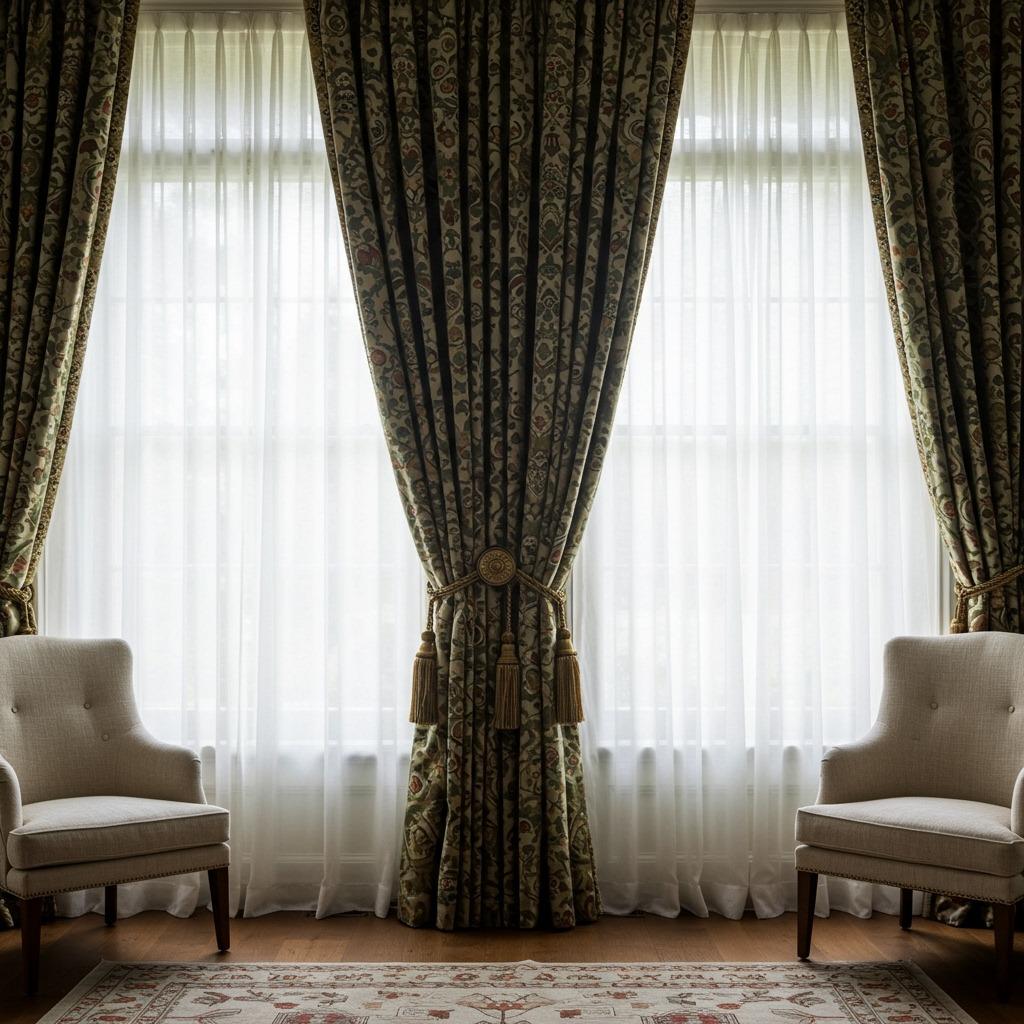
Single curtain panels won’t cut it in a maximalist space. Layer sheer curtains under heavier drapes, add valances or pelmets, and don’t shy away from tasseled tiebacks and decorative hardware. The more elaborate, the better.
Pattern on window treatments amplifies your overall design. Floral drapes, damask curtains, or even bold geometric prints frame your windows while contributing to the room’s pattern play. Make sure they’re long enough to puddle slightly on the floor for that luxurious, custom look.
Consider unconventional options like beaded curtains as room dividers, or vintage sari fabric as unique window panels. These unexpected choices add personality and often cost less than traditional drapery while looking infinitely more interesting.
13. Include Global Textiles and Treasures
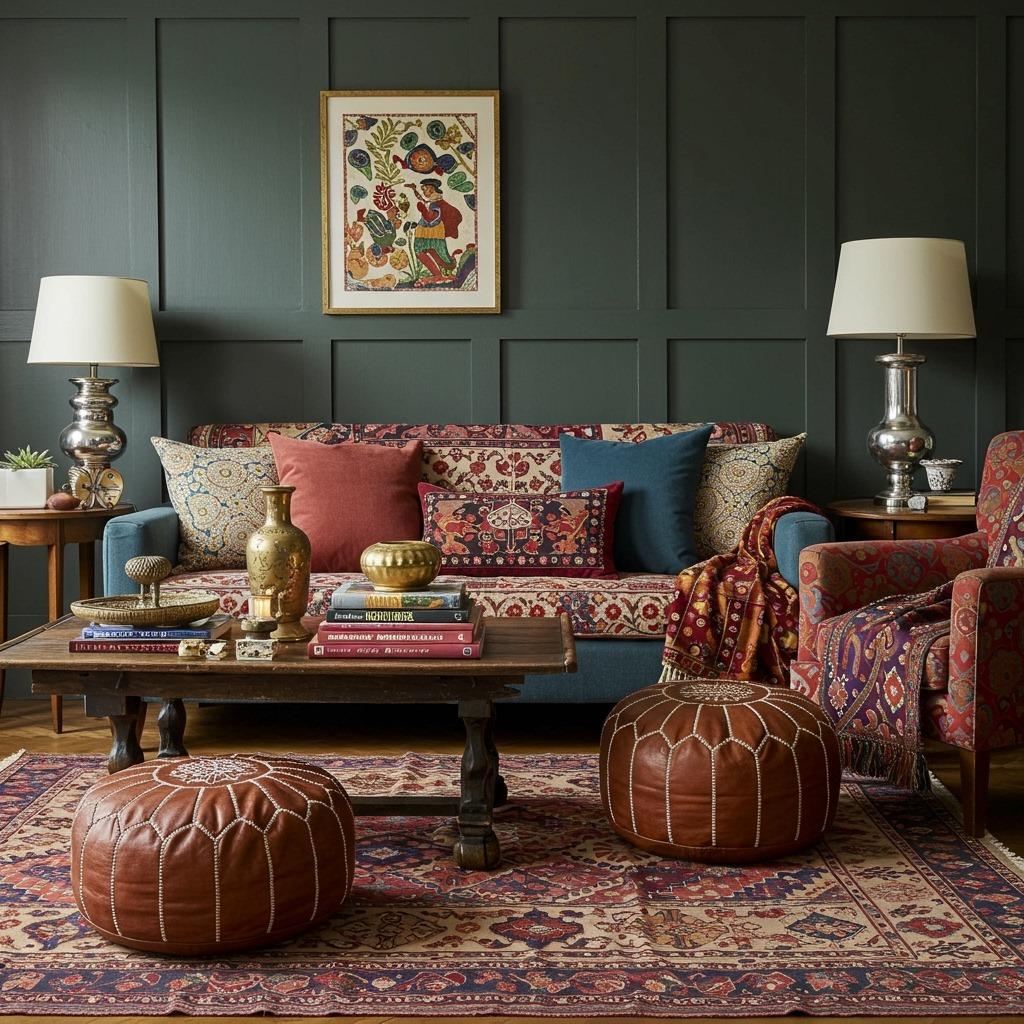
Textiles from around the world bring instant character. Turkish kilims, Indian block prints, Mexican blankets, and African mudcloth all contribute color, pattern, and cultural richness. These pieces often have stories behind them, which aligns perfectly with maximalism’s personal nature.
Drape textiles over furniture backs, use them as wall hangings, or layer them as throws. A suzani textile over a sofa back or a vintage kantha quilt folded on an ottoman adds texture and visual interest while remaining functional.
Global treasures extend beyond textiles. Moroccan poufs, Chinese garden stools, Indian brass trays, and Indonesian carved boxes all bring worldly sophistication to your space. These items often feature intricate details that reward closer inspection.
14. Paint or Wallpaper Your Ceiling
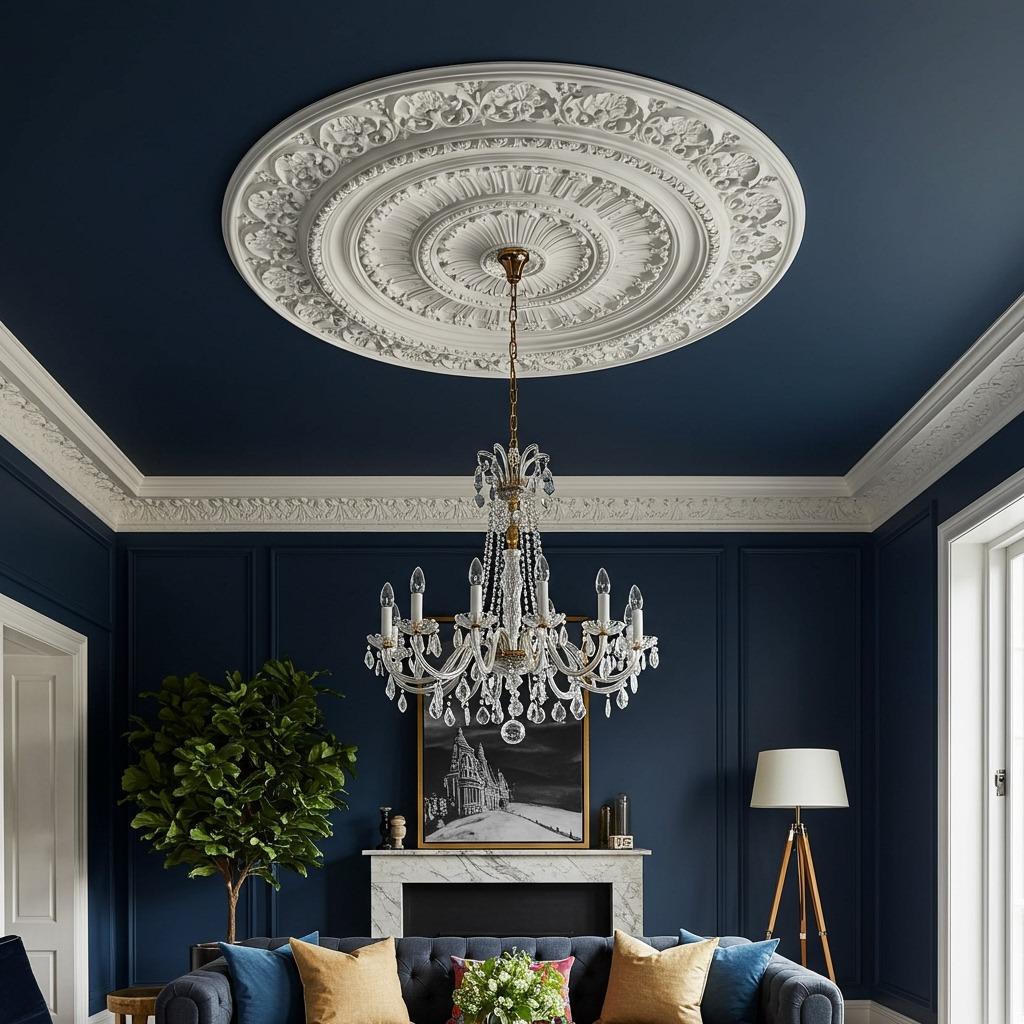
The fifth wall deserves attention in maximalist design. A painted ceiling in a deep, saturated color creates an enveloping, jewel-box effect. Navy, forest green, or even black ceilings add drama without overwhelming since you’re not looking up constantly.
Wallpapered ceilings take things further. Patterns overhead create an immersive environment that surprises visitors and makes your space truly one-of-a-kind. Floral patterns, celestial designs, or geometric prints all work depending on your overall aesthetic.
Ceiling medallions and crown molding add architectural interest that enhances maximalist style. If your home lacks these details, adhesive versions offer an affordable home upgrade that adds visual weight and traditional elegance.
15. Create Cozy Reading Nooks Within the Space
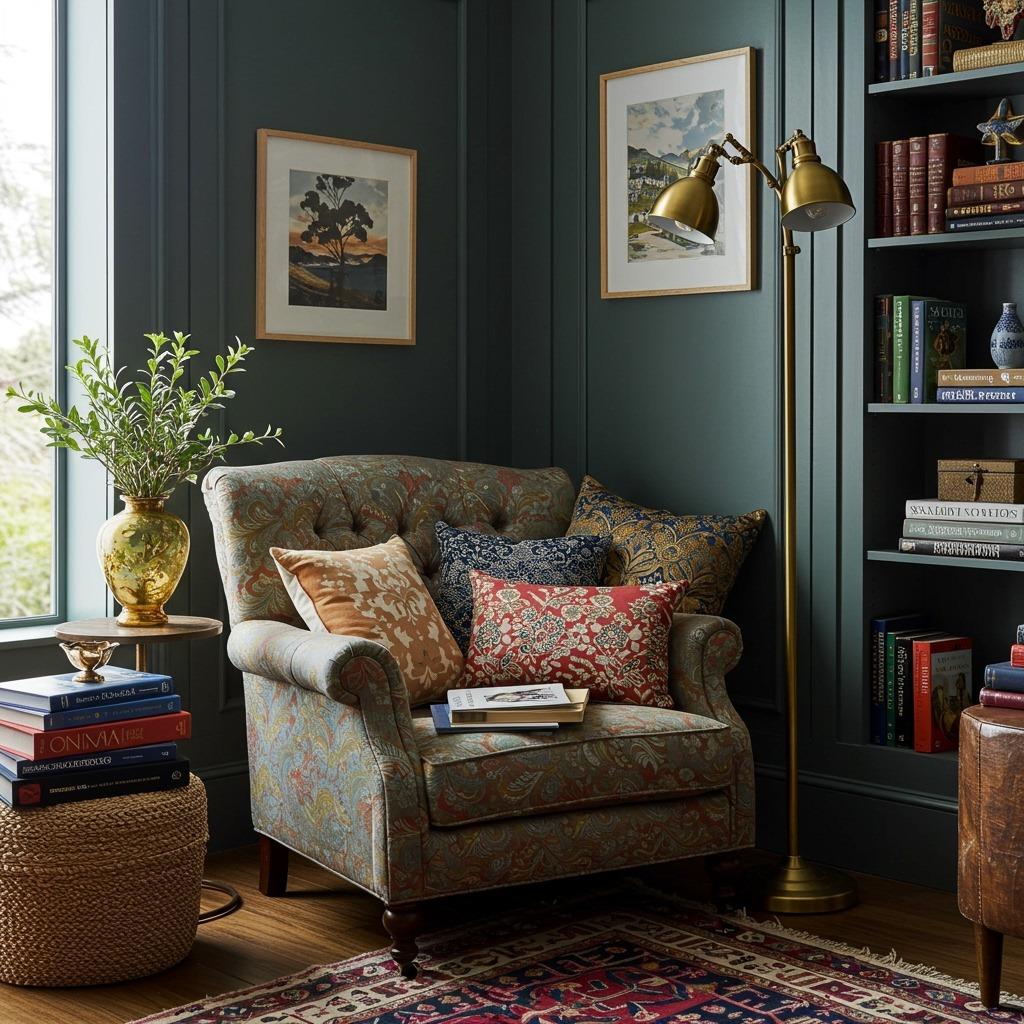
A maximalist living room can accommodate multiple functional zones. Dedicate a corner to reading with a plush chair, good lighting, and nearby bookshelves. Layer this mini-space with its own rug, side table, and collection of throws and pillows.
Built-in or free-standing bookshelves should be full, even overflowing slightly. Books arranged by color create rainbow effect, or mix orientations with some vertical and some horizontal for a more organic look. Style shelves with books plus decorative objects for the maximalist aesthetic.
Window seats offer another opportunity for cozy nooks. Pile them high with cushions in complementary patterns, add curtains for privacy, and position a small table nearby for tea and books. These intentional spots encourage actually using and enjoying your beautiful space. The concept works similarly to cozy small living room designs, just with more layers.
16. Mix Metals Throughout the Space
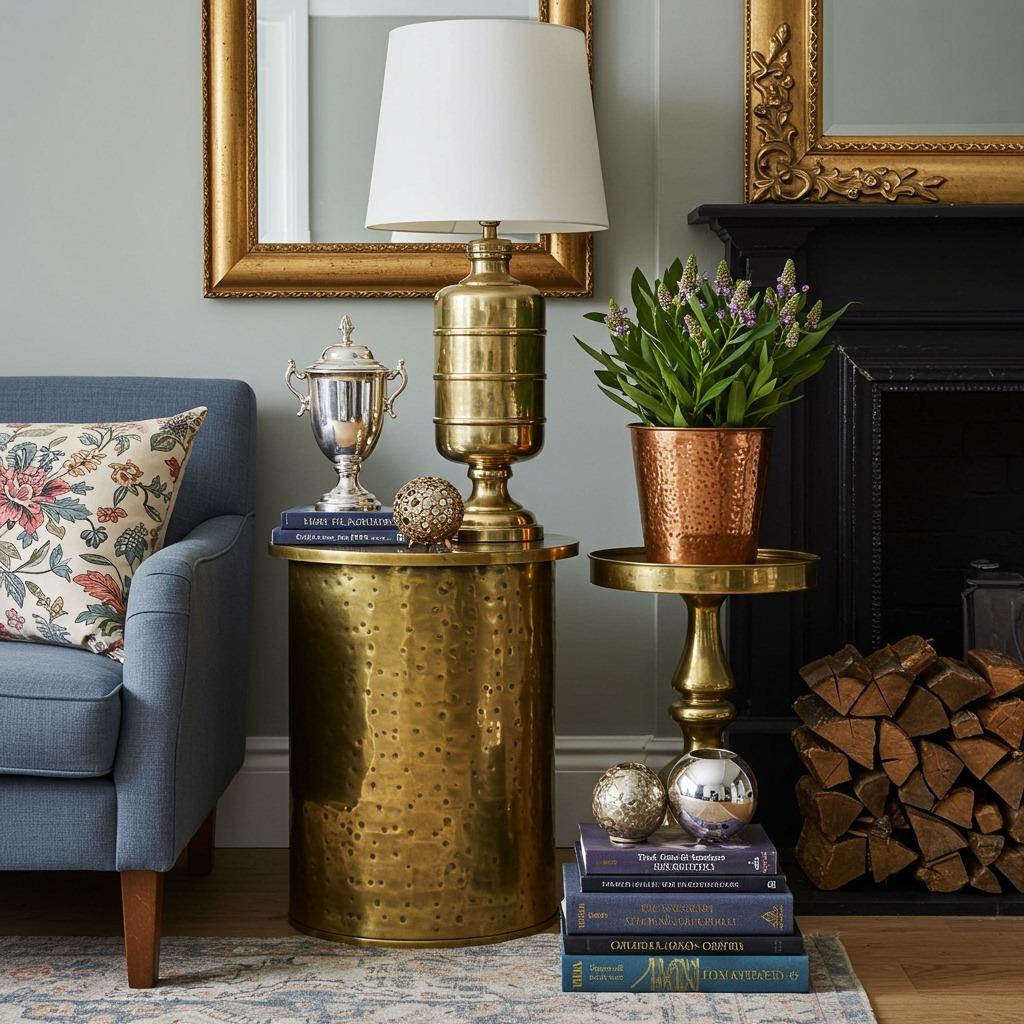
Forget the old rule about matching metals. Brass, copper, chrome, silver, and gold can all coexist in a maximalist living room. Different metal finishes catch light uniquely, adding dimension and preventing any single element from fading into sameness.
Mix metals intentionally across different types of objects. A brass coffee table, silver picture frames, copper plant pots, and gold mirror all contribute without competing. The variety reads as intentional collecting rather than indecision.
Patina and aged metals fit maximalism perfectly. Tarnished silver, weathered brass, and aged copper have character that shiny new metals lack. Don’t polish everything to perfection; those imperfections tell stories and add authenticity.
17. Trust Your Instincts and Edit Carefully

The paradox of maximalism is that it still requires editing. Not everything you love needs to be displayed simultaneously. Rotate collections seasonally, store some items to prevent actual clutter, and be thoughtful about what earns space in your room.
Create intentional vignettes rather than random placement. Group objects by color, material, or theme to create visual cohesion even within abundance. This curated approach distinguishes maximalism from clutter, ensuring your space feels rich rather than chaotic.
Step back regularly to assess your space. Sometimes removing one element makes everything else shine brighter. Maximalism is about confident abundance, not desperate hoarding. Trust that your space should bring joy, not stress, and adjust accordingly.
Making Maximalism Work for You
Creating a maximalist living room is deeply personal and endlessly rewarding. Unlike trend-driven minimalism that can feel cold or impersonal, this layered decor approach celebrates your unique tastes and experiences. Every object, pattern, and color choice reflects who you are.
Start with what you already love. That weird ceramic cat from your grandmother, the bold artwork you bought on vacation, the vintage rug you found at an estate sale – these are your foundation. Build around pieces with meaning rather than starting from scratch with matching sets.
Remember that maximalism evolves. Your space will grow and change as you discover new treasures and your tastes develop. That’s part of the beauty. Unlike designed-in-a-day minimalist rooms, maximalist spaces develop organically over time.
The key is balancing abundance with intention. Each element should earn its place through beauty, meaning, or function. When you nail that balance, you’ll have a space that’s not just visually stunning but genuinely feels like home.
For more inspiration on creating spaces that reflect your personality, explore our collection of boho chic living room ideas or discover how to incorporate modern accent wall ideas into your maximalist design.
Your maximalist living room should make you smile every time you walk in. It should be comfortable enough for everyday living while impressive enough to wow guests. Most importantly, it should tell your story through color, pattern, and carefully collected treasures that you genuinely love.



